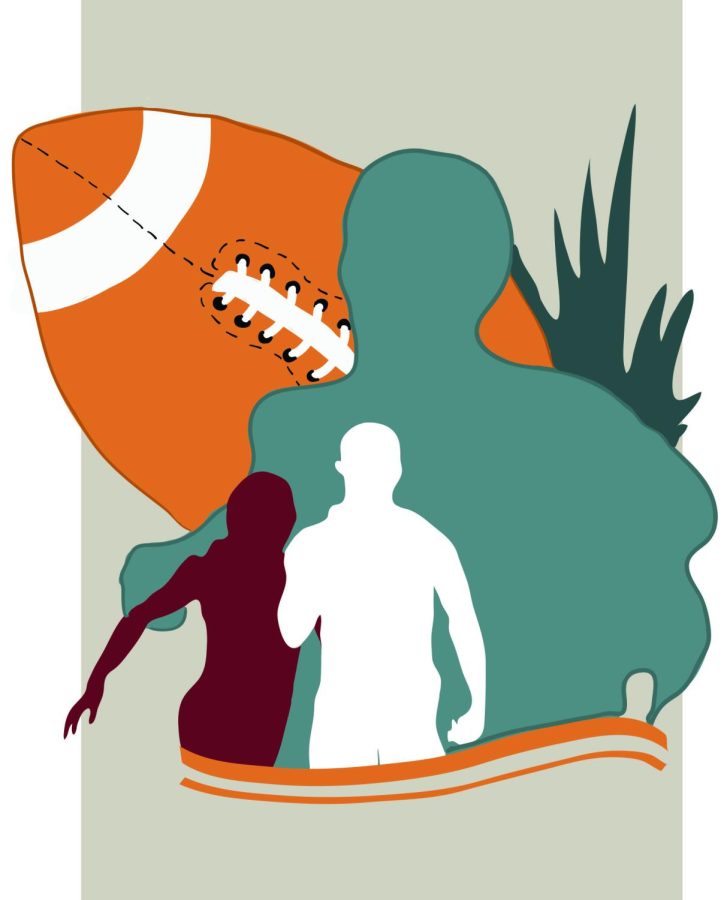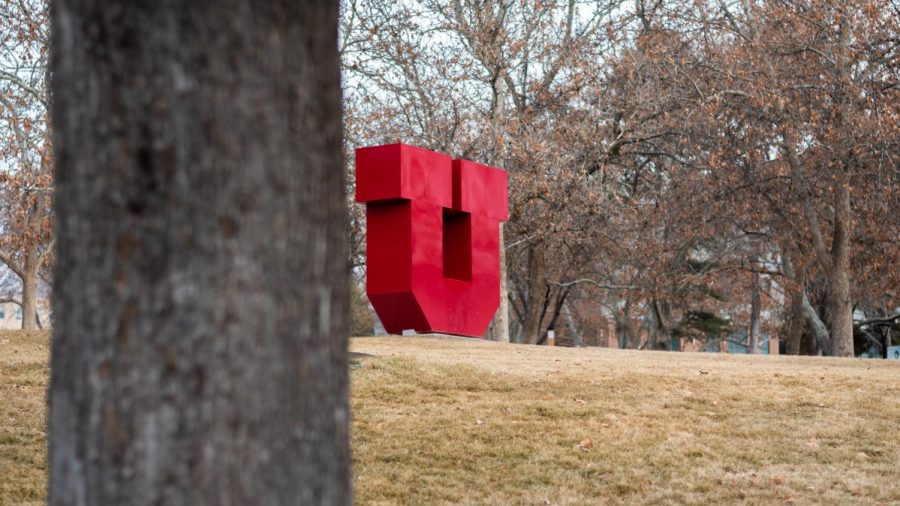How the Environment Impacts Sports
(Graphic by Storey McDonald | The Daily Utah Chronicle)
October 28, 2021
The environment is everything in sports, and much of the pageantry of it revolves around these modern-day coliseums, home to some of the best athletes on the planet. However, there is an obvious aspect of the sporting environment that is often overlooked. It’s the first thing you see when you walk into an outdoor stadium, what every sports fan has fantasized about storming out on as a player or a coach. This is, of course, the field itself.
Playing surfaces can have a greater impact on the sport than most people would think. The two primary types of outdoor fields that are used in any kind of athletics are usually turf and grass. While there are multiple sports that utilize both turf and grass fields, the most popular example would no doubt be football.
There are only a handful of teams in the MLB who play on turf and a few MLS teams. However, in the NFL, there is much more of a balance in this turf to grass ratio. Overall, 15 teams play on artificial turf while 17 play on field grass. College football stadiums are overwhelmingly turf, however, among the most historic D-1 programs, most still play on natural grass surfaces.
Why might this be the case? Well, the answer is simple. Most universities opt for turf fields as the cost to maintain them is much cheaper. Turf fields generally cost much more upfront for installation, but the cost for regular maintenance of a grass field is much greater than that of a turf field.
The equipment and manpower required to maintain a natural grass field are much greater than the alternative. Most turf fields require minimal water as well, which is beneficial both financially and environmentally. Turf is also more weather resistant and doesn’t succumb to elements as much as natural grass would, which is important in states like Utah with heavy snowfall.
Utah Athletics has both turf and grass fields for its various teams. While most of these are grass, Rice-Eccles, being the largest venue, is notably turf. The newly renovated Rice-Eccles last replaced the turf field in 2015 using “FieldTurf ,” an extremely popular choice for many universities, high schools and pro-teams. The move was supposed to save millions of dollars and save water, as it requires zero to maintain the field.
An article written in 2002, stored in the UNEWS Archive, states that switching to turf saved the university over 2.4 million gallons of water, which would otherwise have been used on a natural surface. This was especially important as they were in a drought just like the state currently is.
Cost is not the only thing to consider when evaluating the differences between artificial turf and natural grass. One of the most cited statistics in this debate is that injuries occur more often on turf fields as opposed to natural grass. According to an injury report cited by the NFLPA to advocate for only grass fields in the NFL, non-contact foot or ankle injuries are 69% more likely to occur on turf as opposed to natural grass. Non-contact knee injuries are 32% more likely and non-contact lower extremity injuries are 28% more likely. The study was performed by compiling injury data from 2012-2018 and looking at which injuries occurred on what surface. This is something that many teams have taken into account as some switch to hybrid surfaces to combat this.
But who better to ask than the athletes themselves? According to Utah Football’s very own tight-end Brant Kuithe, he echoed many of the same sentiments when posed with the turf versus grass question.
“Grass for sure … turf hurts my feet and my knees and whatnot,” Kuithe explained. “Grass gives you a little bit more cushion and there are less injuries on grass than there are [on] turf.”
Additionally, Kuithe also said that his answer does change depending on the weather, but under “perfect conditions,” grass would definitely be his choice.
While there are benefits to each surface, it seems the consensus from players is that grass is preferred due to the increased quality and grip that it provides. However, even though grass may reduce the chances of injury, it is easy to understand why athletic departments might opt for the seemingly more affordable and easier to maintain artificial turf. That being said, sometimes nothing beats the real thing.








